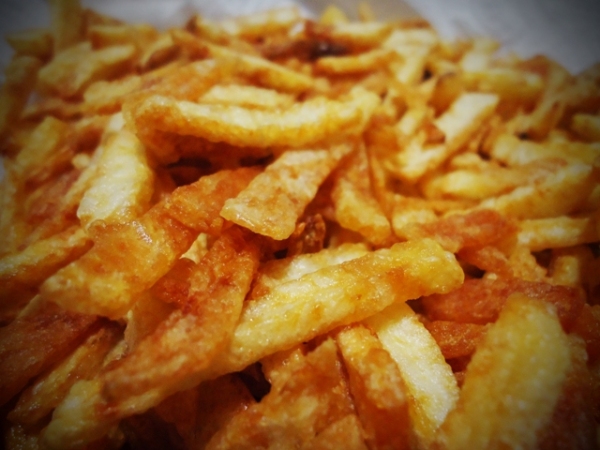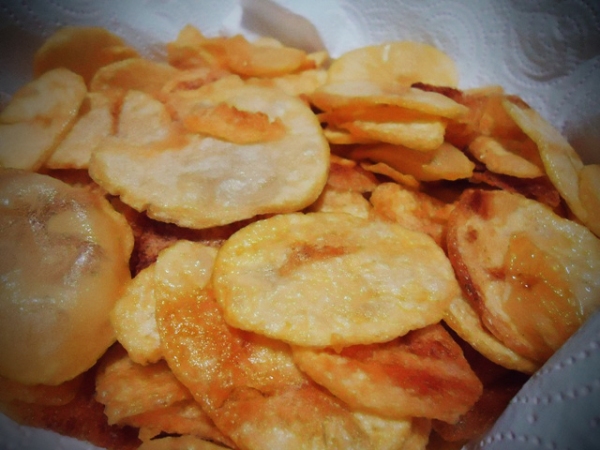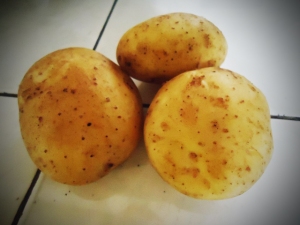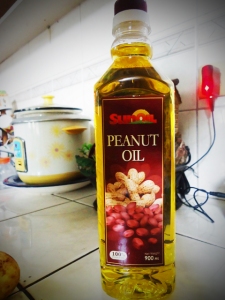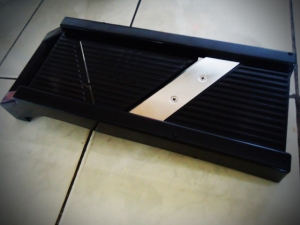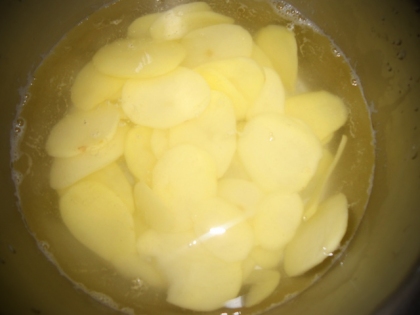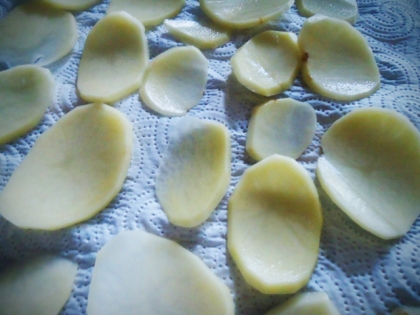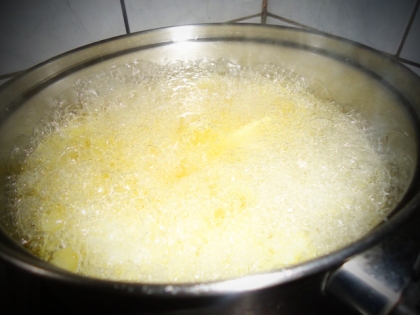The first time I tried puttanesca, I swore to myself I’d try cooking it someday. And hey, guess what, this is that promise’s fulfillment. I finally made it! ^_^
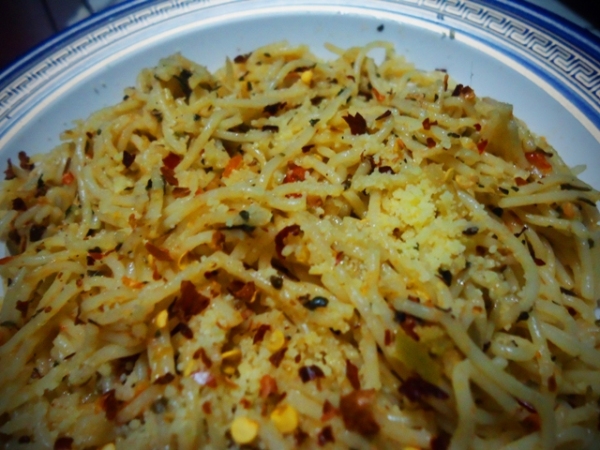
Part of my preparation for cooking this pasta was to check other restaurants’ puttanesca–Pizza Hut’s and Bigoli’s–aside from Friuli Trattoria’s to make sure I get the right taste of it. During my food testing, I realized that I don’t like those green stuff called capers so I vowed to look for a puttanesca recipe online that didn’t include capers on its ingredients. The Pioneer Woman’s recipe was the answer to my prayer.
The Essentials and the Expenses
Contrary to puttanesca’s rumored origin, some of its ingredients are quite expensive, at least in the Philippines, like the olives and olive oil. So just like in my Project Cocina de Camilla #1, I made a lot of alterations here, too, either because some of the ingredients on my recipe source were too hard to find or I simply didn’t like them.
The biggest change was increasing the amount of the ingredients by a hundred percent of those prescribed on The Pioneer Woman’s recipe. This was because my Mom told me the night before cooking that the serving suggested on the recipe wasn’t sufficient for a family with a monstrous appetite likes ours. Well, I got her point so I followed her.
Anyway, below are the essentials of this project with their corresponding prices:
Essential #1: 3 cups cherry tomatoes, halved
Bought: 4 boxes of Dizon Cherry Tomatoes
Prices: 48.88 pesos (0.188kg)
43.16 pesos (0.166kg)
45.76 pesos (0.176kg)
41.08 pesos (0.158kg)
from SM Supermarket
Essential #2: 16 ounces (around 500g) Angel Hair Pasta
Bought: 1 500g San Remo Angel Hair Spaghetti
Price: 71.50 pesos from SM Supermarket
Essential #3: Whole red onion, sliced
Bought: N/A, readily available at home
Price: N/A
Essential #4: 4 cloves garlic
Bought: N/A, readily available at home
Price: N/A
Essential #5: Crumbled parmesan cheese
Bought: 1 100g Perfect Italiano Parmesan Cheese
(Already crushed)
Price: 176 pesos from SM Supermarket
Essential #6: Crushed chili
Bought: 1 25g SM Bonus Crushed Chili
Price: 39.50 pesos from SM Supermarket
Essential #7: 1 cup pitted olives
Bought: 1 140g Capri Pitted Green Olives
(140g is not enough. It’s only equivalent to 1/2 cup)
Price: 53 pesos from SM Supermarket
Essential #8: Basil leaves
Bought: 1 180g McCormick Basil Leaves
Price: 222 pesos from SM Supermarket
Essential #9: 4 tablespoons of olive oil
Bought: 1 250ml Doña Elena Pure Olive Oil
Price: 117.50 pesos from SM Supermarket
Essential #10: 1 1/2 cups of chicken broth
Bought: 1 Knorr Chicken Broth Cube
Price: 6 pesos from a nearby store
Essential #11: 8 pieces tuyo or dried fish filets
Bought: 8 pieces dried fish
Price: 15 pesos from a nearby store
Essential #12: 2 cooking pots
Bought: N/A, readily available at home
Price: N/A
Essential #13: Mortar and pestle
Bought: N/A, readily available at home
Price: N/A
Total Project Expenses: 879.38 pesos
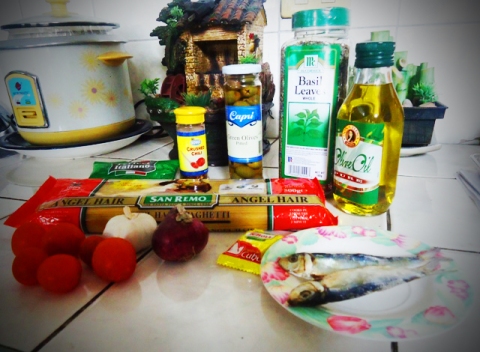
Preparing and Cooking the Puttanesca
While cooking this, I found out that pasta-making is easy albeit the preparation is quite long. I got a little bit nervous only because hey, it was my first, and with the modifications I made, who wouldn’t feel butterflies in their stomach?
Anyway, the firsts in my preparation were to cook the 500g angel hair spaghetti for strictly two minutes (I used a timer! haha) as instructed on its plastic, boiled the chicken broth cube, sliced the onion and cherry tomatoes according to how the recipe I followed did them, then removed the heads, scales, and bones of the tuyo. (A note on the tuyo: Fry the tuyo first to remove their skins. I tried doing otherwise and discovered that the scales don’t get peeled off for they stick to the dried fish meat if raw.)
The next instruction goes, “Mash (in this order) garlic, [tuyo], and olives using a mortar and pestle,” but since the tool available at home is small, I ground only the garlic and tuyo first, placed them on a plate, then crushed the olives separately. I mixed all the three up on the plate.
Now here starts the best part: The cooking. I heated the olive oil in a cooking pot then added the sliced red onion after a little while and cooked it for a few minutes. When they were already color caramel, I put the cherry tomatoes and cooked them until they almost didn’t resemble being halved tomatoes (This wasn’t on the direction given, in fact, if you’ll look at the photo provided by The Pioneer Woman, the halved tomatoes were still visible on the finished puttanesca. But looking at the sizes of what I bought, I decided that they would be too big for the Asian mouth. hehe)
I then poured the broth and stirred for a couple of minutes. When I thought that the sauce was finally okay, I added the pasta and mixed everything with all my might (500g of pasta was a lot, I learned! Mixing it was tiring!).
As I was stirring for already a couple of minutes, I began to feel disappointed because my pasta had yet to achieve the same color as with that of The Pioneer Woman. I didn’t stop though. I sprinkled some parmesan cheese on it but stopped when I realized it won’t be enough. I’d just have those who would eat put some on their plates themselves. I also sprinkled generously the basil leaves I bought (No, not whole leaves as instructed, but pounded since whole ones were nowhere to be found on the supermarket.). Then I kept stirring to make sure the sauce and the pasta got mixed up well. After that, that’s it.
The whole time I was cooking, my Mom kept on going near me to comment on the heavenly aroma of puttanesca and check what I was doing. She was actually the first one to notice that my puttanesca looked dry, but still, when she had a taste of it, she instantly loved it!
At first I didn’t want to believe but when my brother tried it, he loved it, too. In fact, he had another plate right after the first and even bought a liter of coke for it. My sister also had two rounds of it the next day (She went home very late when I cooked because of her OJT, thus, “the next day”.) and also said it was delicious. WHOA.
Of course, I ate too and though it was indeed dry, it did taste puttanesca. The ingredients couldn’t be denied, especially the olives, albeit I only used 1/2 cup of it instead of 1.
The crushed chili I bought was sprinkled by the eaters to their plates depending on how spicy or not they wanted their pasta were. This made the taste of the puttanesca better.
So what’s my verdict for Project Cocina de Camilla #2: Puta-not’s Puttanesca? Still a SUCCESS despite it lacking in sauce! The deliciousness of the puttanesca prevailed. I just have to add more amount per sauce ingredient to avoid it becoming dry the next time I cook it. =^_^=
P.S. I think I get it now why they say those who cook the food lose the appetite to eat what they cook. As I said above, my Mom kept on coming to me once in a while to remark about the smell of my puttanesca, but I couldn’t relate to what she was saying ’cause I couldn’t smell a thing! Another, I was way too exhausting with all the stirring I did that I just wanted to rest when it was done. Anyway, at least I know how to cook my favorite puttanesca now. And hey, again, it was a success. 🙂
—-
SOURCE:
The Pioneer Woman

